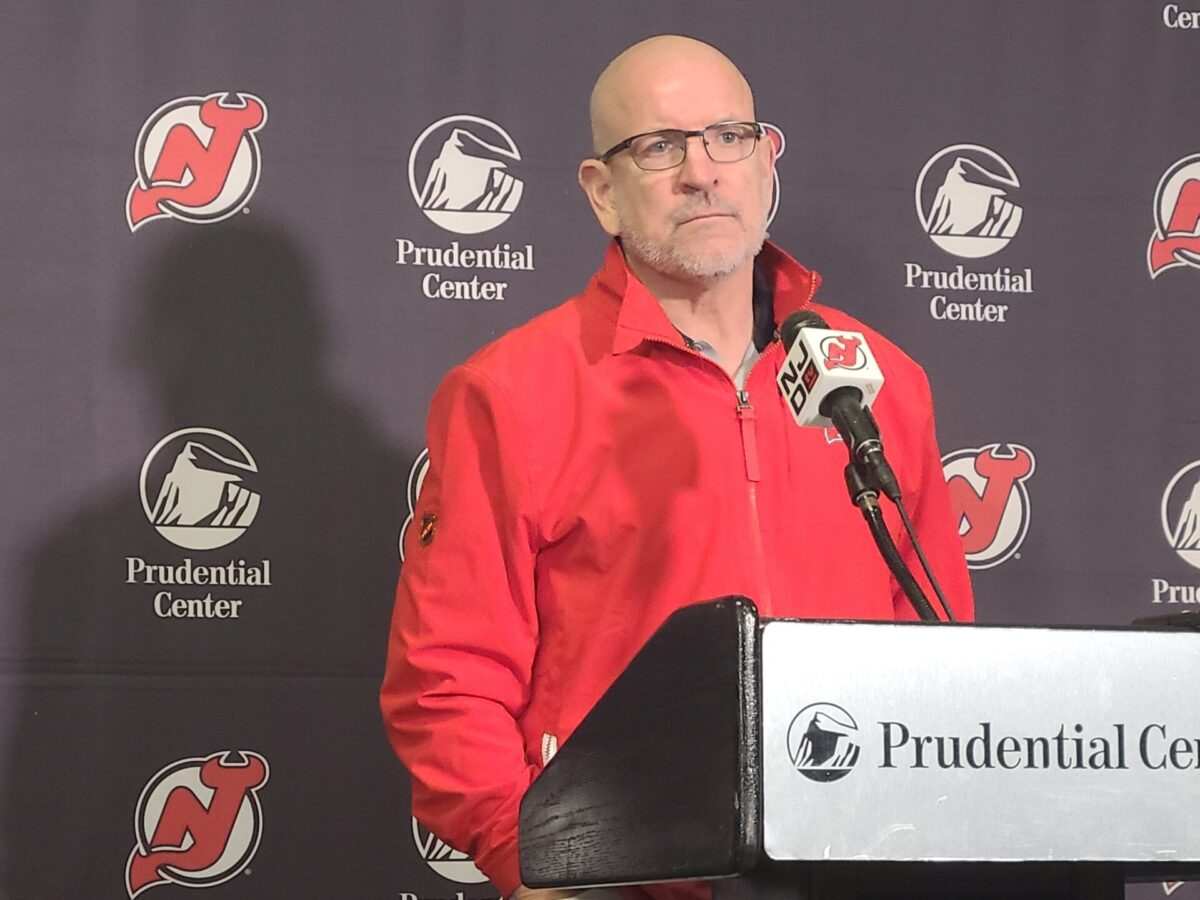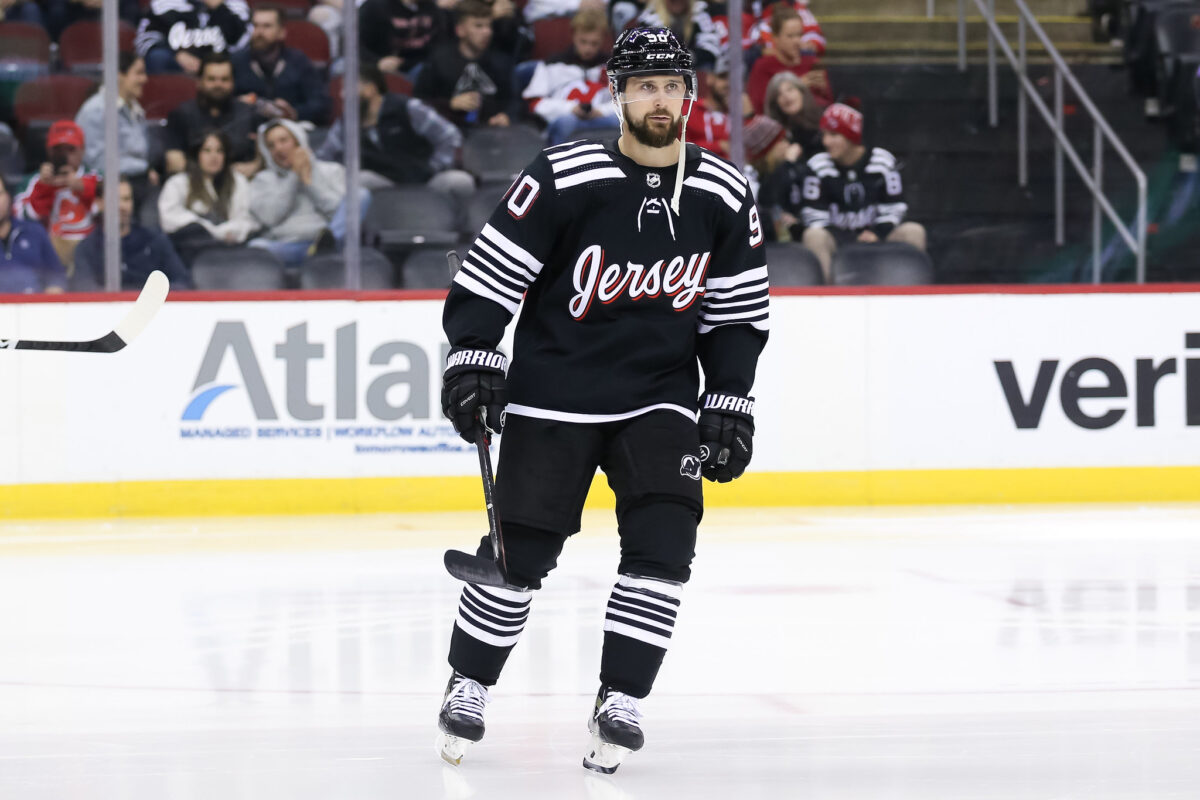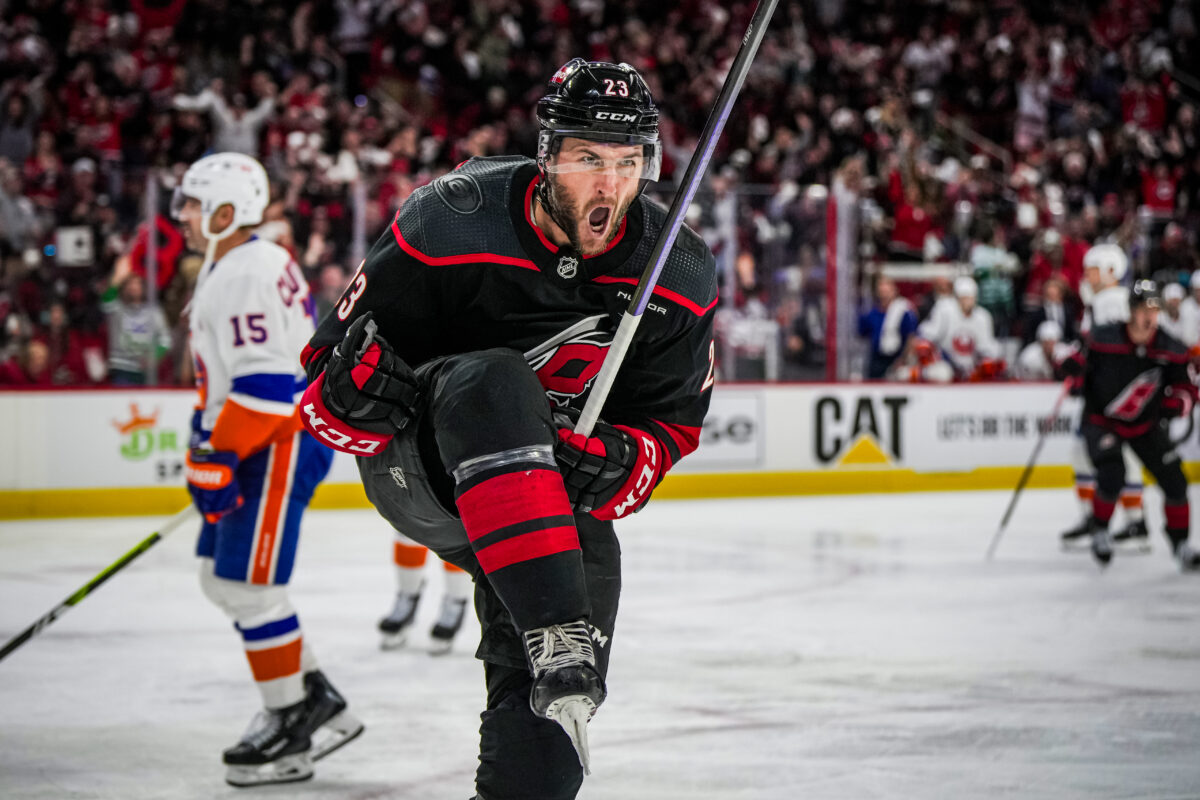Amid the flurry of moves made throughout the NHL on July 1, New Jersey Devils general manager Tom Fitzgerald resisted the temptation to remake his forward group by overpaying for a top-six caliber forward. Instead, he rebuilt his team from the crease outward by inking stellar defensemen Brett Pesce and Brenden Dillon and forming one of the league’s most complete and deep units.
Fitzgerald then filled out his forward group by signing Stefan Noesen and Tomas Tatar, both former Devils. Noesen received a three-year contract of $2.75 million annually, while Tatar signed a one-year deal for $1.8 million. With Noesen, Tatar, and the draft day trade for Paul Cotter, the Devils became a more formidable, diverse, and versatile team.
New head coach Sheldon Keefe has promised to install a system predicated on high pressure in all three zones while allowing his stars room to exploit their talent to create opportunities. Keefe is known to tinker with his lines from game to game and even shift to shift to find chemistry and exploit matchups. These additions will give him the resources to implement his style and adjust to the game’s needs to give New Jersey the best opportunity to succeed.

Even when they were successful in 2022-23, the Devils had difficulty playing against heavy teams that employed a strong forecheck, suffocating the Devils’ rush attack. In 2023-24, New Jersey lacked answers for teams that trapped them in the neutral zone, denying rush opportunities and teams that clogged the slot, forcing them to try to make plays on the perimeter.
Post-game interviews after losses regularly bemoaned the Devils’ inability to create opportunities off the forecheck and their difficulty getting the puck to the inside. Taking a page from the Stanley Cup Champion Florida Panthers, the Devils remade their team to emphasize interchangeability, experience, speed, and a willingness to win the difficult battles in all areas of the ice without sacrificing talent.
Balance in the Top Six
Just before the close of development camp, Fitzgerald met with the media to discuss the draft and the start of free agency. When asked whether the team needed to add more top-six players, he said the Devils had enough talented players and focused on finding ones who could complement players like Jack Hughes, Nico Hischier, Jesper Bratt, and Timo Meier.
“I think when you look at top six, I think we have plenty of top six players, and I also think we’ve got enough complementary top six players that can play with true top six guys. I’m not sure how many teams in the league actually got six top six guys… (Tatar) was a player that we are very familiar with, and we know he’s played really well with the top six guys on our team.”
Tom Fitzgerald, July 3, 2024
Much like Tatar, Noesen has been deployed throughout lineups during his time in the NHL and proved that he can add snarl and skill up and down the lineup. He was used anywhere from the fourth line to the top power-play unit with the Carolina Hurricanes. Known for his toughness and his shot, he brings an element that has been lacking. Neither player will make up for the loss of thirty goals due to the departure of Tyler Toffoli, but both add elements the Devils lacked and, combined, should easily make up much of the goal deficit, especially when paired with Hughes and Hischier.
Devils Can Now Roll Four Lines
The best teams in the league can roll all four lines. Last season, the Devils were often too reliant on only nine or ten forwards, which placed them at a significant disadvantage, especially when injuries hit. This season, they should be able to play all four lines and find ways to get contributions from each. Fitzgerald confirmed that entering training camp, his four primary centers will be Hischier, Hughes, Erik Haula, and Curtis Lazar. It gets interesting how the wingers are placed around the centers. Keefe will have a panoply of options to try to execute his vision.
RELATED: Devils Are Adding Physicality Without Sacrificing Talent
Hischier and Hughes are the only players stapled to the top six, while Nathan Bastian and Kurtis MacDermid are locked in on the fourth line. The other nine forwards can play throughout the lineup. A case could be made for Mercer playing anywhere in the top nine. He could be reunited with Hischier and Tatar to reunite a line that dominated opponents. That line played the second most minutes together of any line on the team and posted an expected goals-for percentage (xGF%) of 64.5 (per Money Puck), outscoring opponents 18-10. When teamed with Tatar and Bratt, Hischier drove the line to outscore opponents 9-2 over 138 minutes.

Hughes, Haula, and Bratt played over 175 minutes together and posted an absurd 70.1 xGF%. The Devils could easily deploy those lines as their top six and try to tilt the ice in ways they did during that season. Of course, this would shift Meier to the third line. This seems counterintuitive until you consider that putting Meier on a line with players like Palat and Noesen, who will grind and allow him to drive play and volume shoot, may play to his strength. Similarly, sliding Bratt down to the third line could sometimes add danger to that group and make the Devils very difficult to defend against. Finding a way to match Bratt’s speed against slower, third-pair defensemen may be an exploitable matchup without sacrificing in the top six.
Despite his lower counting numbers, Palat has been a good complement to Hischier and Hughes during his time as a Devil. Palat and Hughes have been paired for 272 minutes over the past two seasons. That deployment has led to an xGF% of 59.47 (per Natural Stat Trick). Palat has played with Hischier for just over 638 minutes. In that time, the pair excelled, posting an xGF% of 58 while earning 59% of the actual goals scored. Palat has played almost 700 minutes without either Hischer or Hughes, usually with Haula, and in that time, he has played to an xGF% of 55.31. Moving Palat seamlessly between the first and third lines on either wing is a huge advantage for New Jersey, creating an opportunity to deploy Palat strategically.
The acquisition of Noesen should excite Devils fans. He is not the same player he was when he departed New Jersey in 2019. He has evolved into a player comfortable on all four lines and the power play. As the Devils learned in the 2023 Stanley Cup Playoffs, Noesen is not shy about defending his teammates and taking on opponents. He could easily slot into left-wing alongside Hughes, providing defense and snarl, freeing Hughes to focus on attacking the net. Noesen does not need the puck to be effective, and his forechecking and retrieval should lead to turnovers and quick counterattacks, something players like Hughes, Bratt, and Mercer are well-positioned to take advantage of. Noesen could also slide down to form a premier checking line when paired with Haula and Palat. He could also slide down to form a relentless forechecking line with Lazar and Cotter.

Options abound for the fourth line. Keefe legitimately has six forwards from which to form his fourth line. The one likely constant will be Lazar, initially penciled in as the 4C. This line is where the Devils’ youth can have the most impact, as Nolan Foote and Brian Halonen can play heavily and provide secondary scoring. The Devils could go huge and play Cotter and MacDermid, or opt for speed and play Cotter and Bastian. As the Panthers proved in the playoffs, rotating pairs of wings around a fourth-line center to adapt play styles is effective. The Devils missed the speed and attitude of Miles Wood last season and often did not even play the fourth line after the first period. Cotter should change that as he brings a version of Wood’s tenacity and combination of speed, power, and scoring ability.
Fitzgerald has provided Keefe with arguably the most complete roster of his NHL career. It is now up to Keefe to get the team’s leadership group to buy into his vision of versatility that should breed success. Cultivating a culture where players like Meier, Palat, and Bratt can seamlessly slide throughout the lineup to create advantages makes the team significantly more dangerous to match up against. Reuniting with Noesen and Tatar should allow the Devils to play through injuries and significantly improve their ability to defend for 200 feet. The Stanley Cup Final demonstrated that teams that are versatile and can roll four lines are built to succeed. The Devils now have the depth and skill to play multiple styles, which should translate to sustained success.
